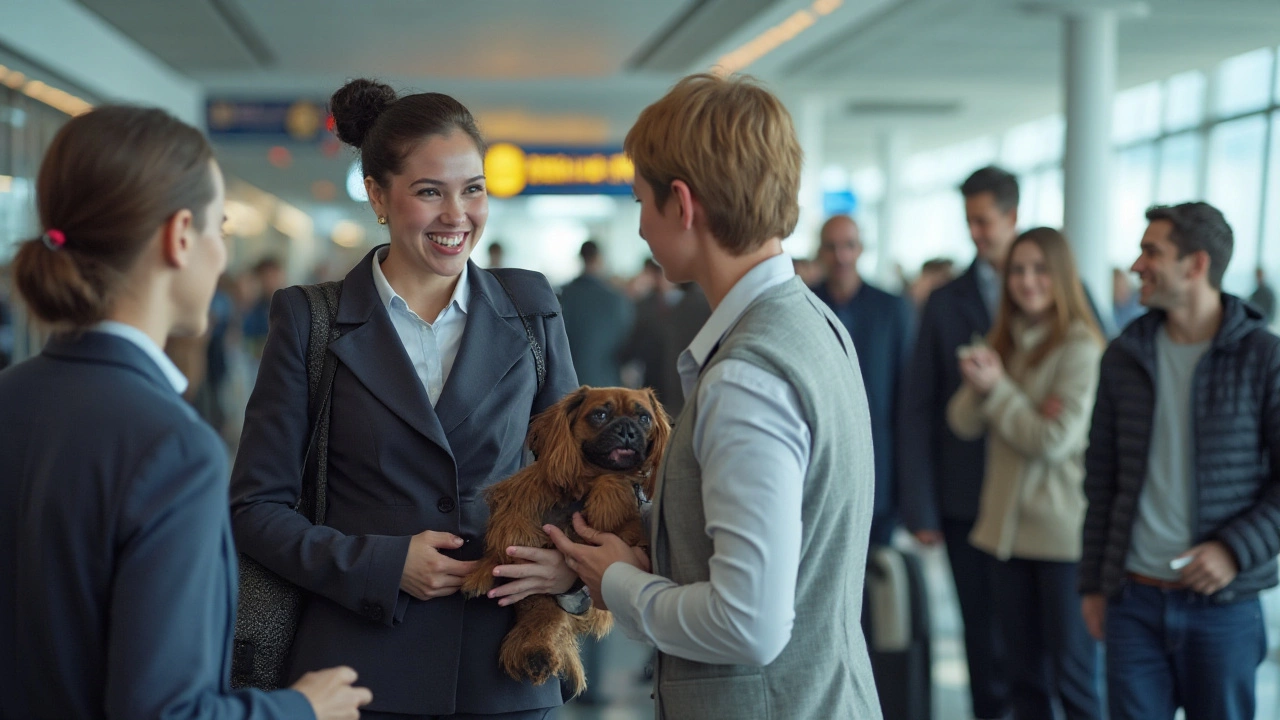Airline Pets: Your Easy Guide to Flying With Dogs and Cats
If you’ve ever imagined your pup or kitty perched beside you on a plane, you’re not alone. Flying with a pet feels tricky, but it doesn’t have to be. This guide breaks down the steps you need, from booking the ticket to landing at your destination, so you can travel with confidence.
Before You Book: What to Check
First, look at the airline’s pet policy. Some carriers allow cats and dogs in the cabin, while others only accept them as cargo. Check the size limits for carrier dimensions – most airlines require a soft-sided crate that fits under the seat. If your pet is too big, you’ll need to book the cargo hold and follow extra steps.
Next, gather the paperwork. Most airlines demand a recent health certificate signed by a vet, usually within 10 days of travel. Some countries also need a rabies vaccination record or import permit. Call your vet early so you have time to get any shots or blood tests done.
When you choose your seat, aim for a window or a row with extra space. A window lets you keep an eye on your pet, and a bulkhead seat often gives a bit more room for the carrier. Remember to book early – airlines cap the number of pets per flight.
Finally, get a travel‑ready carrier. It should be well‑ventilated, secure, and comfortable for your pet to stand, turn around, and lie down. Line the bottom with a familiar blanket or shirt to calm nerves. A quick test at home—letting your pet spend a night in the carrier—helps spot any issues before the airport.
On the Day of Travel: Smooth Moves
Start the day with a light meal for your pet; a full belly can lead to nausea. Take a short walk to let your dog stretch and do business. Keep the carrier close, but don’t force your pet inside if they’re scared—use treats and calm praise to encourage them.
At the airport, go to a pet‑friendly check‑in desk. Show the health certificate, let staff inspect the carrier, and pay any pet fees. If your pet travels in cargo, ask about temperature control and the exact location of the hold.
While waiting, keep the carrier out of direct sunlight and away from drafts. Many owners bring a water bottle with a drip tip to keep the pet hydrated. For dogs, a chew toy or a favorite bone can be a good distraction.
When it’s time to board, follow the crew’s instructions. If you’re in the cabin, place the carrier under the seat and squeeze it in gently. Keep the door closed; the cabin pressure won’t affect your pet’s safety. If your pet is in cargo, the airline staff will handle loading—just stay calm, as pets can sense your vibe.
During the flight, check on your pet if you’re allowed to peek into the carrier. Talk softly and reassure them. Most pets are fine once the plane is airborne and the cabin settles.
After you land, head straight to the baggage claim or pet relief area. Give your dog a chance to stretch and drink water. A quick walk outside helps settle any lingering anxiety.
Traveling with a pet takes a few extra steps, but the reward of sharing new places together is priceless. Keep your paperwork organized, choose the right carrier, and stay relaxed—you’ll make the journey a breeze for both of you.

Do Airlines Feed Pets in Cargo During Flights?
Traveling with pets can be daunting, especially when your furry friend has to fly in the cargo hold. This article explores whether airlines provide food for pets in cargo during flights. It offers valuable insights and tips on how to prepare your pet for travel and ensure their well-being when flying in cargo. Pet owners will discover what services airlines typically offer and how to make the journey more comfortable for their animal companions.
View more